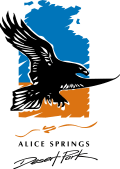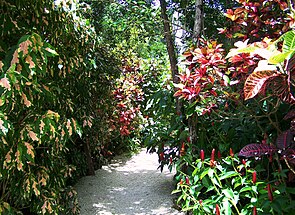
The CaymanIslands is a self-governing British Overseas Territory, and the largest by population. The 264-square-kilometre (102-square-mile) territory comprises the three islands of Grand Cayman, Cayman Brac and Little Cayman, which are located to the south of Cuba and northeast of Honduras, between Jamaica and Mexico's Yucatán Peninsula. The capital city is George Town on Grand Cayman, which is the most populous of the three islands.

Jersey Zoo is a zoological park established in 1959 on the island of Jersey in the English Channel by naturalist and writer Gerald Durrell (1925–1995). It is operated by the Durrell Wildlife Conservation Trust. It has approximately 169,000 visitors per year; visitor numbers tend to vary with the tourist trade to Jersey.

Grand Cayman is the largest of the three Cayman Islands and the location of the territory's capital, George Town. In relation to the other two Cayman Islands, it is approximately 75 miles (121 km) southwest of Little Cayman and 90 miles (145 km) southwest of Cayman Brac.

The Atlanta Botanical Garden is a 30 acres (12 ha) botanical garden located adjacent to Piedmont Park in Midtown Atlanta, Georgia, United States. Incorporated in 1976, the garden's mission is to "develop and maintain plant collections for the purposes of display, education, conservation, research and enjoyment."

The Mesker Park Zoo and Botanic Garden is a zoo that opened in 1928 in Evansville, Indiana, United States. It is located in Mesker Park on Evansville's northwest side and is run by the City of Evansville.

Fairchild Tropical Botanic Garden is an 83-acre (34 ha) botanic garden with extensive collections of rare tropical plants including palms, cycads, flowering trees, and vines. It is located in the city of Coral Gables, Miami-Dade County, just south of Miami, surrounded at the north and west by Matheson Hammock Park.

The blue iguana, also known as the Grand Cayman ground iguana, Grand Cayman blue iguana or Cayman Island rock iguana, is an endangered species of lizard which is endemic to the island of Grand Cayman. It was previously considered to be a subspecies of the Cuban iguana, Cyclura nubila, but in a 2004 article Frederic J. Burton reclassified it as a separate species because according to him the genetic differences discovered four years earlier between the different C. nubila populations warranted this interpretation. The blue iguana is one of the longest-living species of lizard.

Kings Park, is a 399.9-hectare (988-acre) park overlooking Perth Water and the central business district of Perth, Western Australia.

The Mona ground iguana is a critically-endangered species of rock iguana, endemic to Mona Island, Puerto Rico. It is one of the island nation’s few large land animals, and it is the largest endemic terrestrial lizard in the country, and one of the biggest rock iguanas within the Antilles. It was previously considered a subspecies of the rhinoceros iguana.

The rhinoceros iguana is an endangered species of iguana that is endemic to the Caribbean island of Hispaniola and its surrounding islands. A large lizard, they vary in length from 60 to 136 centimetres, and skin colours range from a steely grey to a dark green and even brown. Their name derives from the bony-plated pseudo-horn or outgrowth which resembles the horn of a rhinoceros on the iguana's snout. It is known to coexist with the Ricord's iguana ; the two species are the only taxa of rock iguana to do so.

The Saigon Zoo and Botanical Gardens is Vietnam's largest zoo and botanical garden. The Saigon Zoo and Botanical Gardens was commissioned by Admiral Pierre-Paul de La Grandière in 1864, and was opened to the public in 1869, making it one of the world's oldest continuously operating zoos.

The northern Bahamian rock iguana is a species of lizard of the genus Cyclura that is found on Andros Island and the Exuma islands in the Bahamas. Its status on the IUCN Red List is vulnerable, with a wild population of less than 5,000 animals.

The Cuban rock iguana, also known as the Cuban ground iguana or Cuban iguana, is a species of lizard of the iguana family. It is the second largest of the West Indian rock iguanas, one of the most endangered groups of lizards. A herbivorous species with a thick tail and spiked jowls, it is one of the largest lizards in the Caribbean.

Cyclura rileyi, commonly known as the Bahamian rock iguana or the San Salvador rock iguana, is a critically endangered species of lizard in the family Iguanidae. The species is native to three island groups in the Bahamas, and is in decline due to habitat encroachment by human development and predation by feral dogs and cats. There are three subspecies: the Acklins ground iguana, the White Cay iguana, and the nominotypical subspecies.

Cyclura nubila caymanensis, the Lesser Caymans iguana, Cayman Brac iguana, Cayman Island brown iguana or Sister Isles iguana, is a critically endangered subspecies of the Cuban iguana. It is native to two islands to the south of Cuba: Cayman Brac and Little Cayman, which are also known as the Sister Isles due to their similar shapes and close proximity to each other. The population of this subspecies has been impacted by habitat encroachment by human development and is likely being destroyed due to predation by cats, the population on Cayman Brac has remained particularly small for decades.

The Central Florida Zoo and Botanical Gardens is a 116-acre (47 ha) zoo and botanical garden located north of Orlando, Florida in Sanford. As a not-for-profit organization, it is a leader in conservation, providing experiences that inspire actions on behalf of wildlife. The Zoo has been an accredited member of the Association of Zoos and Aquariums (AZA) since 1986.

The Alice Springs Desert Park is an environmental education facility and wildlife park in Alice Springs in the Northern Territory of Australia.
The National Trust for the Cayman Islands is the national trust serving the Cayman Islands. Its purposes are to preserve sites of artistic and architectural interest in the islands and to provide protection for local natural resources and wildlife. It also oversees a program in which sites of special historic interest are marked with a plaque noting their importance.

Cyclura is a genus of lizards in the family Iguanidae. Member species of this genus are commonly known as "cycluras" and only occur on islands in the West Indies. Rock iguanas have a high degree of endemism, with a single species or subspecies originating on an individual island.

Cyclura pinguis, the Anegada rock iguana, Anegada ground iguana or stout iguana, is a critically endangered species of lizard of the genus Cyclura belonging to the family Iguanidae. The species can be found exclusively in the islands of Anegada and Guana. Historically, it inhabited the islands of Puerto Rico and Saint Thomas; however, the animal's original range has been greatly diminished over prehistory.






























